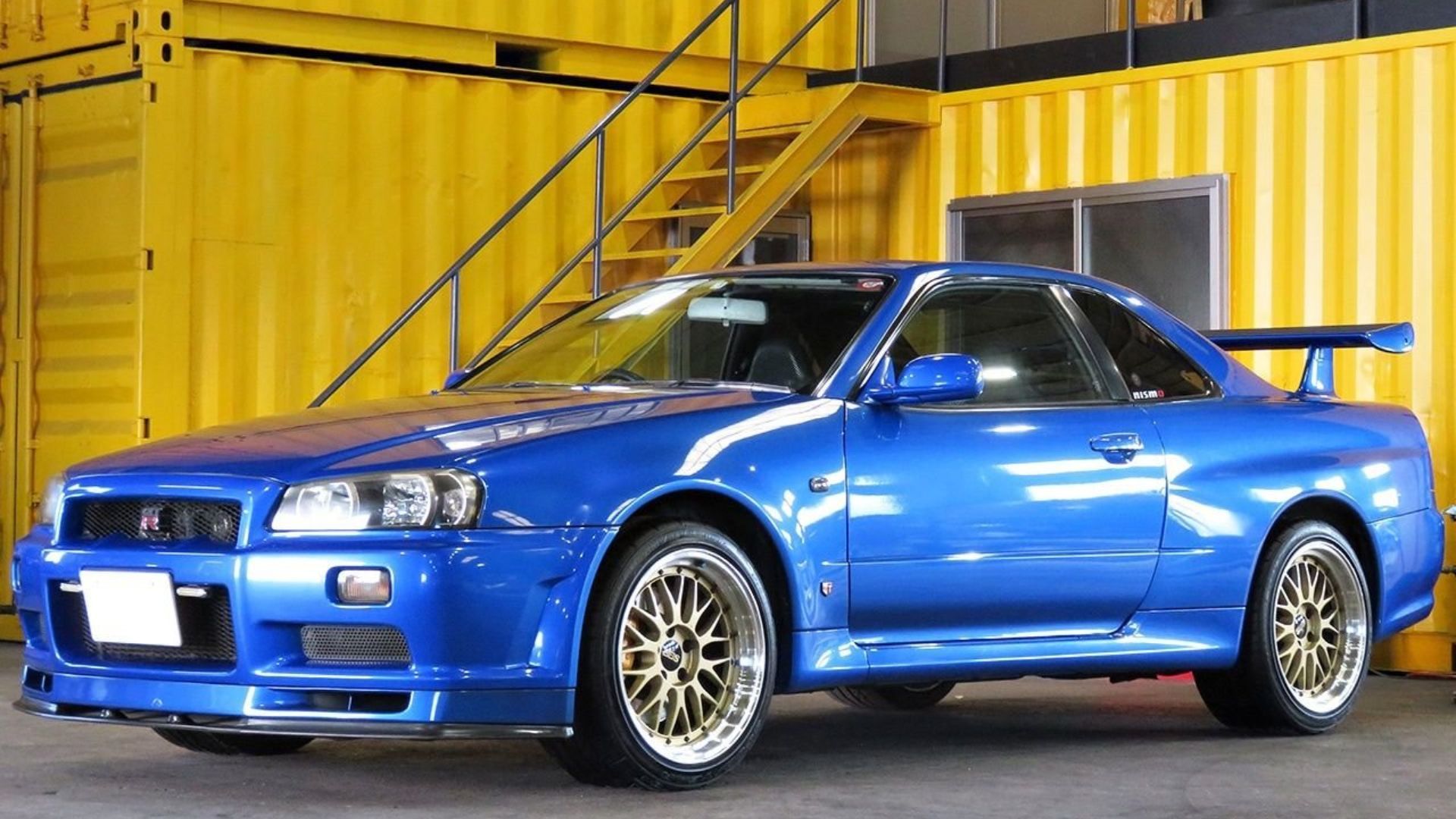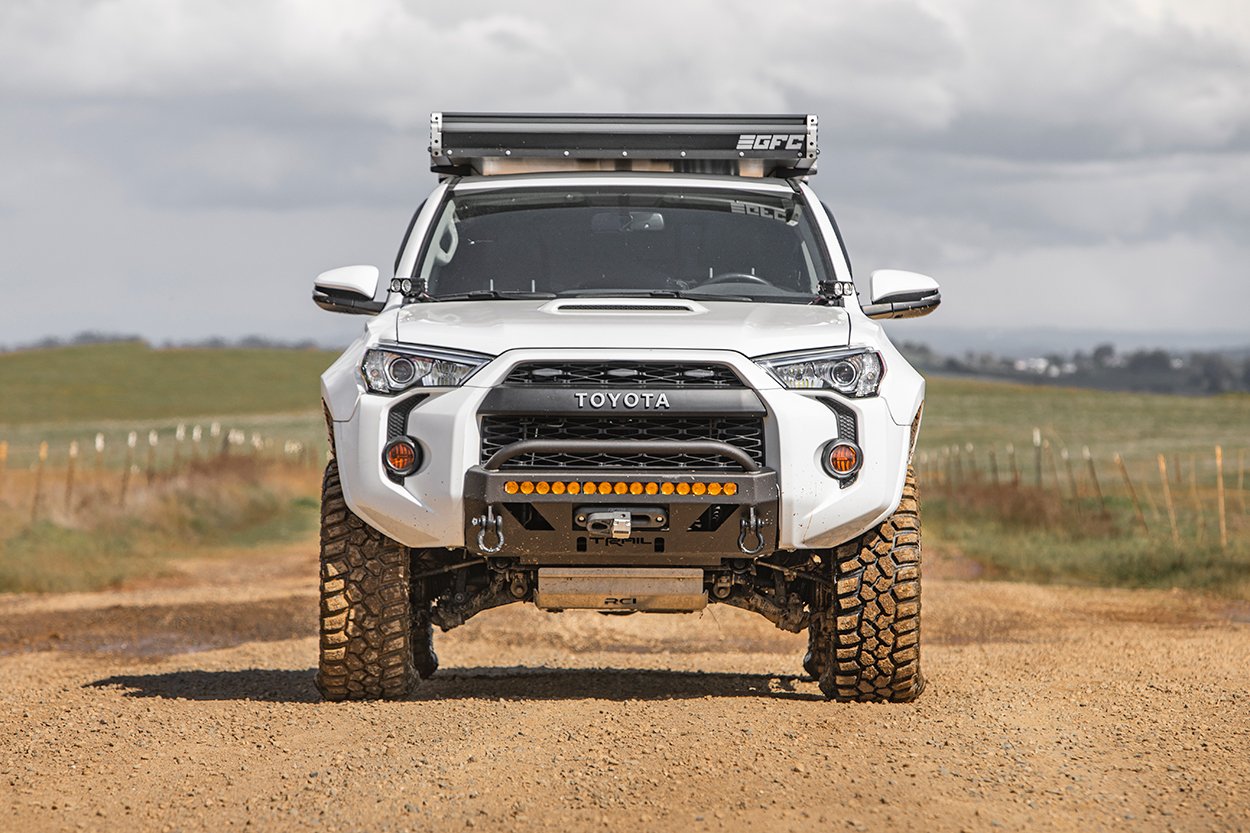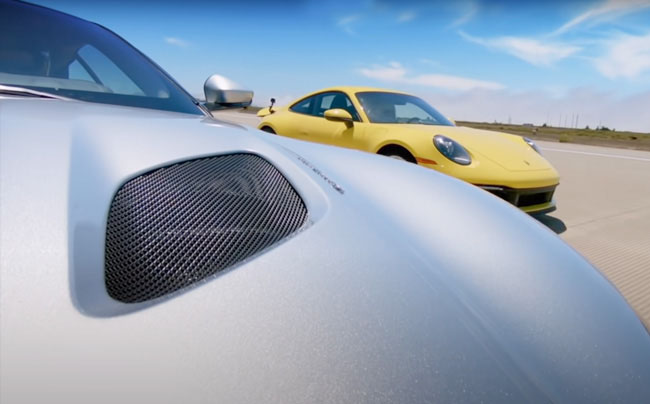In the United States, and many other countries around the world, the automotive market has never seemed richer. Color choices may have diminished greatly since the 1970s, but in terms of brands, models, features, price points and other considerations, the marketplace is rich, diverse and ready for any kind of buyer. The added dimension of pre-owned cars is also a welcome addition, further widening selection and improving affordability.
JDM: Another Automotive World
As you explore your own domestic market, however, you may believe that you have all options laid out in front of you. It’s only when you start to look more widely that you realize that there’s another world of cars and other vehicles waiting for you out there. One of the most popular “other-worldly” markets is that known as the Japanese Domestic Market, or JDM for short.
Today’s article is a guide for the uninitiated and familiar alike, taking you on a tour through the unique space that JDM occupies, what types of vehicles and specific brands and models are popular, as well as the benefits you can gain from buying JDM and the potential pitfalls you can face.
What is the JDM Market?
Put simply, the Japanese Domestic Market is a pre-owned vehicle market where all items within the selections put up for auction or for direct sale are models that were originally built exclusively for the Japanese market. In other words, these are the vehicles that Japanese companies made for their own countrymen, and not for export.
Often there are good, practical reasons as to why certain models are unsuitable for export. The market may not be right for this specific product, or there may even be barriers or specific regulations that prevent such a car being drive on the streets of another country.
In terms of choice, the JDM space is certainly diverse. From high-performance sports cars, to quirky sedans blending styles of varying countries, and innovative camper vans that offer families or automotive project lovers an affordable, customized option for outdoor getaways. All can be found in the weird and wonderful world of JDM cars.
Who are JDM Buyers?
The target buyers of JDM vehicles are as mixed as the vehicles they seek. As we touch on above, fans of the outdoors love getting their hands on unique Japanese camper vans that combine great arrays of features including pop-up roofs, cooking stoves, electric outlets, flat beds and more even in their older models from the early 1990s. Another big sector is the performance car arena, where Japanese-specification cars like the Subaru Impreza/WRX for speed, or the Nissan S13 180x for drifting, are popular among track enthusiasts. Sometimes these cars will not be street-legal in the US because of the heavy levels of modification that happen to them, but some are and you might often see one cruising around, setting itself apart from the white, black and silver mass of production models that most people drive nowadays.
While the US is a big market for JDM vehicles, they are also very popular in countries like the UK and Australia, which share a thing in common with Japan: the side of the road they drive on. Yes, Japanese cars are right-hand drive, which means they are built originally to drive in the left lane. This makes them prime candidates for export to the UK, Australia, South Africa and other countries and territories with the leftie tendency. They import more easily and have fewer safety concerns.
Nonetheless, Americans, too are thirsty for JDM vehicles, even in spite of the somewhat pesky 25-year rule that governs car imports.
The 25-Year Rule
In short, this is a rule dating back to 1988 which stipulates that no imported vehicle is legal in the United States if:
a) It was not originally made in the US
b) It is less than 25 years old
To be more precise, the specific law comes from the Imported Vehicle Safety Compliance Act. It was originally designed to combat public safety concerns of grey market cars — those built outside the US and not designed to meet US safety standards — the act now makes Americans’ choices on JDM cars somewhat limited, though some dealers find tricky ways to get around the rule (more on this further below).
Before the rule was in place, back in 1985, the US enjoyed a thriving market on grey-market vehicles, with around 60,000 units being brought into the country just in the year 1985 alone. Safety gaps would include things like no airbags, or additional parts put onto the car in a far-from professional manner. This would make cars cheaper to buy, which in many ways was good for the consumer, but the concerns over the safety disparity grew to be too great, and the act was brought into effect in 1988.
With this rule in place, it means that the newest JDM cars that can easily and legally be brought into the country by an individual without access to loopholes are from 1995. In 2021, that will go up to 1996.
What Are Some Popular JDM Models?
As we discussed in the previous section, the world of JDM is one of diverse offerings and unique tastes. Since there are so many hundreds of models to choose from for all kinds of uses, we’ve broken it down to typical JDM fan types and then a prime example of the kind of car that they like to import. For the purposes of this list, we are not limiting our selection to US buyers, who are unfortunately constrained by the 25-year rule in many cases. We will include JDM enthusiasts the world over, and make the assumption that given the opportunity, American fans of the same kind would follow suit.
JDM Fan 1: The Campers
It’s not there’s any shortage of RVs and camper vans in other places around the world. VW, for example, make some exceptionally luxurious models like the Grand California 680, which are a far cry from those psychedelically painted vans from the 1960s and 1970s. Why, then do JDM vans like the Honda Stepwgn Field Deck and the Toyota Hilux.
The real hardcore JDM fans like to snap up a van like those mentioned above and more and then convert it and update it to their own specification. The total cost, even for extensive renovation, is still far less than what you’d pay for a new VW Grand California 680, which start at $75,000 before you add any frills.
Popular JDM Camper Van: The Honda Stepwgn Field Deck
The Honda Stepwgn was already quite a hero among van enthusiasts all the way up until 1998 when Honda released the Stepwgn Field Deck. The Field Deck included the basic dimensions of the Stepwgn, but with a number of innovative additions that made it a perfect camper. Its basic dimensions:
- Length: 4,705mm (185”)
- Width: 1,695mm (67”)
- Height: 1,815mm (71”)
- Wheelbase: 2,855mm (112”)
The 1998 model brought ideal outdoors features like a pop-up roof usable either as an observation tent or as a sleeping space big enough for 2 adults. Many families used this space as a separate sleeping space for the kids, allowing the whole family to sleep a bit more comfortably, and for parents to keep a closer eye on kids trying to sneak out at night!
Other features include massive amounts of storage, holders, pickets and best of all was the fold-out kitchen in the rear. You may be able to imagine a fold-out table or chair, but an entire kitchen? The Stepwgn Field Deck one had one in its dedicated “Camper” edition. You could fold out a table and gas stove, prepare and cook food and then eat together, and all under the covering of the rear door should it be rainy outdoors.
JDM Fan 2: The Track Star
Japan is a nation that loves its track sports. It is known as the home of the unique motorsport of drifting, which inspired globally popular anime hits such as Initial D. Watching a humble gas station attendant called Takumi Fujiwara transform himself into a superstar street race was like watching a lifelong dream unfold for so many car and racing fans. What people really loved were the cars — Mazda RX-7, Toyota AE86, Nissan S13 180SX and many others — which inspired people as they got older to try and import and try out for themselves.
While many JDM cars imported for track use are not street-legal cars, there are notable exceptions. These are cars built, imported and then modified for life in the literal fast lane.
Popular JDM Track Car: Nissan S13 180SX
Powered at first by the CA18DET 1.8L engine, and then later by the SR20DET 2.0L engine, the S13 is among the most iconic track-star cars, known mostly for its prowess in the uniquely Japanese motorsport of drifting. The 180SX was so named for the DOHC engine displacement of 1.8L. It delivered an impressive 170hp and 166lb-ft of torque.
Another of the S13 180SX’s distinctive features was the “pig nose” and pop-up headlights at the front end. The lights were changed on later models, as too was the pig nose in 1991 as part of an effort to boost aerodynamic performance. More changes through the 1990s, culminating in the 1996 facelifted version mean that fans buying different years start with quite different designs at the outset.
JDM Fan 3: The Individuals
Another breed of JDM fan is those who want to distinguish themselves from the multitudes of other car drivers out there. They look to some of the most distinctive and quirky JDM models available to choose something a little more “artisanal” compared to the mass-produced sea of black, white and silver car paint that seems to be everywhere else around them. Why look like everyone else when you can have a cross between a Nissan and old-world Jaguar?
Popular JDM Quirky Car: Mitsuoka Viewt
Mitsuoka is a brand that screams individualism from the outset. The founder of the company, Susumu Mitsuoka, was quite the character and a real Anglophile when it came to his car designs. Mitsuoka cars typically start off with an initial frame of a Nissan car — though not exclusively Nissan models — and add his own twist to it, creating handcrafted units of sheer unique beauty.
Of course, the rather artisanal design philosophy of Mitsuoka means that the models are quite controversial among drivers. People seem to either love them or hate them. The Mitsuoka Viewt features the body of a Nissan Micra (aka March) but heavy with elements from the 1963 Jaguar Mark 2. If you can imagine that, then you might be the kind of JDM customer Mitsuoka are looking for.
The Viewt was available in two generations the K11 and the K12, the latter of which is still in production. From the rear, it may look like an old-world Micra, but it’s the front end where things really stand out on these JDM models, and for the driver looking to reflect individuality, this is it. The round headlights, prestige-look grille, fine metal finishes around all the edges…it’s splendid to behold.
JDM Fan 4: The Nostalgists
Back in the post-war years, Japanese car makers had a hard time selling their vehicles in export markets. Many models, while admittedly fine examples of engineering and construction, were shunned because nobody wanted to support Japan or admit that they made a better car than an American or European company, especially after all that had gone on with Japan only a couple of decades prior.
By the 1970s, however, things were changing fast. People were finally embracing Japanese models, and some of the examples of the time are now sought after by nostalgic JDM enthusiasts who just want to remember the times that they owned Japanese cars “before they were cool.”
Popular JDM Nostalgia Car – Mazda Savanna GT (1972)
This one is based on the Mazda RX-3 design that was made for export. This special 1972 model was sold exclusively in Japan, receiving the same larger 12A (1.2L) engine, a 5-speed transmission and wider 5.5” rims. Its suspension was fantastically sporty, too, and the inside came with a faux-leather upholstery with “GT” embossed on the headrests.
Nostalgia fans who loved the RX-3 back in the day go crazy for the chance to get their hands on a Mazda Savanna GT. It’s the rarity and uniqueness of the model that make it so appealing when the basic car was already on sale as the RX-3.
If you’re wondering about the smaller engine on a car labelled ‘GT,’ then you need a lesson in the history of the Japanese road tax. Many cars like this were made with smaller engines so that they could be affordable to more drivers. Cars over 1.5L were subject to a much higher tax rate.
Those wanting something a bit more futuristic were treated to the second- and third-generation models, which came with pop-up headlights and a more angular design more typical of the 1980s and early 1990s.
JDM Fan 5: The Bargain Hunter-Investors
Finally, another big slice of the fans is made up of those with a keen eye for a solid investment. They want to find the car that’s cheap today but will get a good value increase in the coming years. These are harder to know about, and you have to do your research, but if you know the trends, and get a bit of insider help, it’s possible to locate some terrific deals.
Popular JDM Investor Car – Nissan 300ZX
This one was also known as the Datsun 300ZX. When it comes to Nissan cars, they don’t get more collectible and desirable as those with Z in the name. In September 2020, were treated to the unveiling of the Nissan Z Proto, thus reigniting the flames of interest in all things Nissan Z. The Nissan 300ZX isn’t in exactly the same line, but they’re surprisingly affordable, and make a solid investment given that the Z models of all stripes are becoming increasingly hard to get. You can get them for under $10,000 and actually drive a lot better than the more famous “Z” car models.
How Do You Import JDM Models to the US?
Despite the strict-sounding arrangements of the 25-year rule, it’s actually quite a lot easier than you think to bring a JDM car into the US. First, we’ll take you through the documentation and other things you’ll need to import your car, but we’ll be assuming that you’re purchasing a JDM model that is 25 years or older, meaning at the time of writing that it’s from at least the 1995 model year.
The first thing to do is to find a good supplier to act as your partner in the transaction. There are quite a few options you can find with a simple Google search. The below information on documentation, for example, was sourced from www.japan-partner.com, but the best thing to do is to find other JDM importers and learn from their experience. It’s easier than ever to share your experience of importing from Japan, and these veteran buyers can help alert you to the many potential problems that could come your way.
Here are some documents that you will require:
- Bill of Lading – this is issued by the shipping company
- Export Certificate (the car’s title) and an official English translation of that certificate
- Invoice (in English)
- ISF (Importer Security Filing), which you are responsible for filing. Failing to file this properly can result in fines of up to $5,000
If you work with a good supplier, they should be able to send you all the required documents via courier so that you can be sure you have everything you need. This is useful when it’s your first time completing the process. You may pay a premium for certain aspects, but it at least shows you the ropes and allows you to get familiar without incurring any fines.
For California, regulations are tightest of all, and your JDM import will have to pass another safety and environment compliance test before it can be officially and properly cleared.
Here are some other questions that people frequently ask about JDM imports:
Are Right-Hand-Drive Cars Legal to Drive in the US?
You may think the Japanese, British, Australians and South Africans all drive on the ‘wrong’ side of the road, but the truth is that when a RHD car is properly and legally landed in the US, it becomes legal to drive on the road. Take a little extra care, however, especially if it’s your first time driving in the US with a RHD car. It can feel a little disorienting at first.
Is it True that JDM Imports Come with No VIN Number?
Yes, it is. There’s no VIN number on JDM cars, but they do come with a chassis number. If you’re not importing the JDM car, but rather buying it from someone who imported it previously, then check to make sure the chassis number is still in place. Some importers have taken to filing them off for some reason. If it has been filed off, ensure that there is still on-paper evidence at least that can trace the car to the original importer.
Can I Find Aftermarket Parts for My JDM Car?
Yes. Despite their age, the aftermarket parts are plentiful for all kinds of Japanese import models. You’ll be able to customize the car to your heart’s content!
Is it True That You Have to Display a JDM Sticker on Your Imported Car?
No, you don’t. In fact, rather amusingly, those people who do attach the so-called JDM sticker to their car — it’s a green and yellow downward-facing arrow-like shape — are in fact sticking on the Shoshinka or Wakaba sticker. It’s used in Japan to denote new drivers who have just passed their test and must identify as such for 12 months so other drivers won’t be too taken aback or get too impatient with their below-par driving level. Is this something you’d like affixed to your own JDM car?
Will I Be Able to Tune My JDM Car?
Of course. This is one of the main reasons people buy JDM models, the tuning and modification potential. Since the engines are usually modular, you can easily affix add-ons and dial up the power. How else will you get your car track ready?
Advantages of JDM Cars
Do we need to go through all of this just to get our hands on a car from Japan? When all is said and done, is it not much easier just to go down to the local dealership and pick up a used car there? We have Japanese brands in the US already, why should we think about the ones originally made for the domestic market in Japan?
The Price is Right
It’s impossible to doubt the amazing deals you can get on these JDM models. When you consider the relative condition that they are in, and how drivable they still are, the money you are paying is very little. Naturally, rarer and more specialist models will be expensive, and can be surprisingly so, but others are at the other end of the spectrum. You can pick up brilliant vehicles for a few thousand dollars, which even with the added expense of shipping still saves you thousands on a very average mass-produced newer car that looks like every other.
Efficiency and Quality
Japanese standards are high when it comes to efficiency and quality of their cars. They care very much about the quality of the engineering and whether the car is affordable and efficient to run. Japan is an expensive country, so cars are made to be affordable. They don’t guzzle gas in the same as we do here in the US. It’s for these reasons that when many receive their JDM imports, they are taken aback by how a 25-year-old car can still appear to be in such good condition.
Many JDM Cars are of a Low Mileage
Quality is also helped along by the fact that Japanese companies often manufacture too many of each model, or at least they did in the past, and that leaves large stocks of many popular models. In addition, Japanese are known for changing their car more frequently than drivers in Western countries, always favoring more the latest models with the right features. This means there are many cars that despite being old have a relatively low mileage for that age.
Potential Pitfalls of JDM Cars
It’s not to say there are no risks, however. Here are some things of which you should be careful when doing your JDM shopping.
Dealing with Difficult or Unreliable Suppliers
There’d be nothing more horrifying that landing your JDM import to discover it was another car with different badging attached, or that there was no engine under the hood, or that the pedals were missing. Maybe the car arrives and there’s an unholy smell because what the seller didn’t tell you is that it was flood damaged. Many scenarios are possible, it’s important you find reputable sellers.
Today, it’s easier than ever thanks to the wonders of social media, Google reviews, and great information sharing from satisfied and dissatisfied customers. Do your research before settling on a seller.
Be Wary of Suspiciously Low Prices
With the massive variety of prices, years and models on the JDM market, it’s easy to get taken in by a listing for quite a premium model, like a Mazda MX-5 Miata, for instance, at a low, low price. It may all look good on the outside, but beneath some of those surfaces could be concealed issues that are impossible to detect from photographs. A rock-bottom price is a clear indication that sellers are trying to clear stock, so be wary.
Research the Models You’re Interested in Carefully
There are certain JDM models that are not good options to buy. It could turn out to be illegal in the US — though a reputable seller would not send you a car they know to be illegal in the US, and they usually do know — or it could be a money trap for maintenance, repairs and spare parts. Do your research to find out if a model you’re looking it among those models that many advise you not to buy. Here are some ideas to get you started:
Conclusion: JDM is a Market Worth Exploring
It doesn’t matter where they are coming from, the business of importing cars is always going to have a few built-in risks. The rewards, however, are also great. JDM cars are quirky, reliable, beautiful and sublimely built. Whether you’re buying to collect, to race, to go camping in, or just to drive around looking different to everyone else in the neighborhood, play the JDM game right and you can find some real treasures hidden away over there on the other side of the world.



